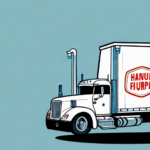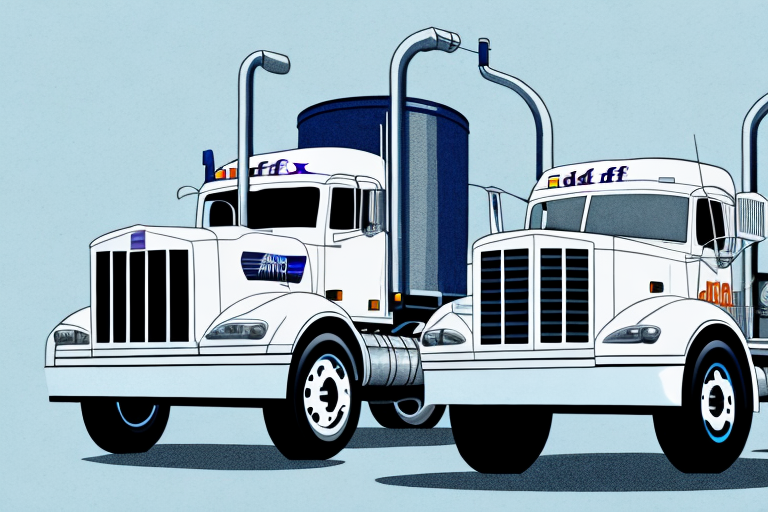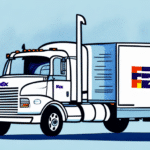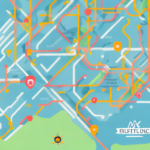Optimizing Route Deliveries for Maximum Efficiency
Routing optimization is a critical component in the delivery process, involving the strategic planning of delivery routes to minimize delivery time, distance traveled, and fuel consumption. Effective route optimization ensures on-time deliveries, enhances customer satisfaction, and provides a competitive edge in a crowded market. In this article, we explore the significance of route optimization, the challenges involved, and the various techniques available to streamline your delivery operations.
Understanding Route Optimization and Its Importance
Route optimization aims to achieve maximum efficiency and cost reduction by minimizing the number of pickups and the total distance traveled. Key benefits of optimizing delivery routes include:
- Reduced Fuel Consumption: Efficient routes lead to lower fuel usage, contributing to cost savings and environmental sustainability.
- Improved Productivity: Optimized routes allow for more deliveries in less time, enhancing overall operational productivity.
- Enhanced Customer Satisfaction: Timely and reliable deliveries bolster customer trust and loyalty.
- Regulatory Compliance: Adhering to local transportation regulations is easier with well-planned routes.
According to a U.S. Department of Transportation report, businesses can reduce delivery costs by up to 20% through effective route optimization.
Additionally, route optimization plays a significant role in reducing a company's carbon footprint. By cutting down on unnecessary mileage and avoiding congestion, businesses can lower their greenhouse gas emissions, aligning with sustainability goals and appealing to environmentally conscious consumers.
The Challenges of Route Planning and Delivery Optimization
Despite its benefits, route optimization presents several challenges:
- Real-Time Updates: The dynamic nature of traffic conditions requires systems that can adapt routes in real-time to avoid delays.
- Unexpected Orders: Sudden changes in orders or last-minute requests can disrupt planned routes, necessitating flexible solutions.
- Weather Conditions: Adverse weather can affect delivery schedules and route safety, complicating planning efforts.
- Capacity Constraints: Managing vehicle capacity and ensuring optimal load distribution is essential for efficiency.
Moreover, finding cost-effective optimization solutions can be particularly challenging for small businesses with limited resources. Implementing advanced GPS tracking and route optimization software can incur significant expenses, though these technologies are increasingly becoming more accessible.
The Benefits of Optimizing Route Deliveries
Optimizing delivery routes offers numerous advantages beyond cost savings:
- Reducing Vehicle Idle Time: Minimizing downtime maximizes vehicle productivity and reduces wear and tear.
- Maximizing Vehicle Utilization: Ensuring vehicles are fully loaded optimizes resources and decreases the number of trips required.
- Minimizing Fleet Size: Efficient routing can lead to a reduction in the number of vehicles needed, lowering capital and operational costs.
- Enhancing Driver Safety: Well-planned routes reduce driver fatigue and the risk of accidents, promoting a safer delivery process.
Furthermore, businesses can significantly lower their carbon emissions through smarter routing. A study by the Environmental Protection Agency (EPA) highlights that optimized delivery routes can reduce emissions by up to 15%, supporting environmental sustainability initiatives.
Operational efficiency is another critical benefit. Streamlined delivery processes allow businesses to allocate resources more effectively, invest in other areas, and improve overall profitability.
Analyzing Your Current Delivery Process for Improvement
The first step in optimizing your delivery process is a thorough analysis of your current operations. Begin by collecting data on:
- Delivery Routes: Map out all existing routes to identify inefficiencies.
- Customer Orders: Analyze order patterns to predict demand and optimize scheduling.
- Vehicle Utilization: Assess how effectively your fleet is being used.
- Fuel Consumption: Monitor fuel usage to identify opportunities for savings.
Utilize tools like Google Analytics and geospatial analysis software to gain insights into your delivery operations.
Customer feedback is invaluable in this analysis. Conduct surveys or use feedback tools to gather information on delivery experiences, including punctuality, packaging quality, and overall satisfaction. This feedback can highlight areas needing improvement and guide adjustments to your delivery process.
Best Practices for Mapping Out Delivery Routes
Effective route mapping is essential for delivery efficiency. Follow these best practices to optimize your delivery routes:
- Determine Optimal Delivery Sequences: Plan routes that minimize drive time and reduce the total distance traveled.
- Leverage GPS Tracking: Implement GPS tracking to monitor vehicle locations and ensure adherence to optimized routes.
- Stay Informed on Traffic Patterns: Use real-time traffic data to adjust routes and avoid congestion.
- Consider Product Requirements: Take into account special handling or storage needs for certain goods when planning routes.
- Account for Vehicle Constraints: Consider the size, weight, and any road restrictions impacting delivery vehicles.
Implementing advanced GPS tracking systems can provide real-time data, enabling dynamic route adjustments and enhancing overall delivery efficiency.
Leveraging Technology to Streamline Your Delivery Process
Technological advancements have revolutionized route optimization, making it easier than ever to enhance delivery efficiency. Key technologies include:
- Delivery Management Software: Centralize your delivery operations, track driver performance, and adjust routes in real-time with software solutions like Route4Me or Geopointe.
- GPS Tracking: Monitor vehicle locations in real-time to ensure timely and accurate deliveries.
- Automated Delivery Notifications: Keep customers informed with automated updates on delivery status, enhancing satisfaction and reducing customer service inquiries.
Integrating AI-powered delivery dashboards can further optimize route planning by predicting traffic patterns and suggesting the most efficient routes based on historical data.
Managing Driver Schedules and Workloads Effectively
Efficient management of driver schedules and workloads is crucial for maintaining a smooth delivery process. Implement the following strategies:
- Create Balanced Schedules: Ensure drivers have adequate rest periods to prevent fatigue and maintain productivity.
- Develop Backup Plans: Prepare for unforeseen circumstances, such as vehicle breakdowns, by having contingency plans in place.
- Provide Communication Tools: Equip drivers with reliable communication devices to report issues and receive real-time updates.
- Invest in Training: Offer training programs on safe driving practices, vehicle maintenance, and efficient route planning to enhance driver performance.
Regularly reviewing and adjusting schedules based on demand fluctuations and traffic patterns can help maintain an optimal balance, ensuring drivers remain motivated and efficient.
Reducing Fuel Costs through Route Optimization Techniques
Fuel costs represent a significant portion of delivery expenses. Implementing route optimization techniques can lead to substantial fuel savings by:
- Avoiding Traffic Congestions: Plan routes that steer clear of peak traffic times and congested areas, reducing idle time and fuel waste.
- Minimizing Route Distance: Shorter routes naturally consume less fuel, directly lowering costs.
According to the Federal Highway Administration, businesses can achieve up to a 15% reduction in fuel consumption through strategic route optimization.
Additionally, lower fuel usage contributes to a reduced carbon footprint, aligning with environmental sustainability goals and enhancing the company's green image.
Optimized routes also lead to better vehicle maintenance and longevity, as reduced mileage decreases wear and tear, further cutting operational costs.
Tracking and Measuring Success: Key Metrics to Monitor
To evaluate the effectiveness of your delivery optimization strategies, it's essential to track and measure key performance metrics:
- Delivery Times: Monitor the average time taken to complete deliveries and identify areas for improvement.
- On-Time Delivery Percentage: Track the percentage of deliveries made on schedule to gauge reliability.
- Fuel Consumption: Analyze fuel usage patterns to identify opportunities for cost savings.
- Vehicle Utilization: Assess how effectively your fleet is being used to ensure maximum productivity.
- Customer Satisfaction: Use surveys and feedback tools to measure customer satisfaction and adjust strategies accordingly.
Implementing data visualization tools can help in effectively tracking these metrics, providing insights that drive informed decision-making.
Case Studies: Successful Route Optimization Strategies
Real-world examples demonstrate the tangible benefits of route optimization:
- CourierX: A national courier company implemented route optimization software, reducing delivery times by 30% and cutting fuel consumption by 20%. This led to increased customer satisfaction and a significant reduction in operational costs.
- FastFoods Delivery: By optimizing their delivery routes, FastFoods Delivery was able to consolidate deliveries, reducing the number of vehicles required by 15%. This not only saved costs but also allowed them to expand their customer base without compromising service quality.
These case studies illustrate how strategic route optimization can lead to improved efficiency, cost savings, and enhanced customer experiences.
Overcoming Common Roadblocks in Implementing Route Optimization
While the benefits are clear, businesses may face obstacles when implementing route optimization plans. Overcome these challenges by:
- Allocating Sufficient Resources: Invest in the necessary technology and infrastructure to support route optimization efforts.
- Providing Comprehensive Training: Ensure that drivers and staff are well-trained in using optimization tools and understanding new processes.
- Staying Flexible: Be prepared to adjust your optimization strategies in response to changes in customer demand, traffic patterns, or other unforeseen circumstances.
- Engaging Stakeholders: Involve all relevant parties, including drivers, managers, and customers, to gain support and ensure successful implementation.
By addressing these roadblocks proactively, businesses can effectively implement route optimization strategies and reap the associated benefits.
Future Trends in Delivery Optimization and Their Impact on Your Business
The landscape of delivery optimization is continually evolving, driven by technological advancements and changing consumer expectations. Key future trends include:
- Autonomous Vehicles: Self-driving delivery vehicles have the potential to revolutionize the delivery process by increasing efficiency and reducing labor costs.
- Artificial Intelligence (AI) and Machine Learning: AI-powered systems can predict traffic patterns, optimize routes in real-time, and enhance decision-making processes.
- Internet of Things (IoT): IoT devices can provide real-time data on vehicle performance, enabling proactive maintenance and further optimizing routes.
- Electric Vehicles (EVs): The adoption of EVs in delivery fleets can reduce fuel costs and carbon emissions, aligning with sustainability initiatives.
Staying ahead of these trends is crucial for businesses aiming to maintain a competitive edge. Adopting emerging technologies early can lead to significant improvements in efficiency, cost savings, and customer satisfaction.
In conclusion, optimizing delivery routes is essential for achieving a streamlined, efficient, and cost-effective delivery process. By addressing challenges, leveraging technology, and staying informed on future trends, businesses can enhance their delivery operations, satisfy customers, and sustain long-term success in the competitive delivery market.




















